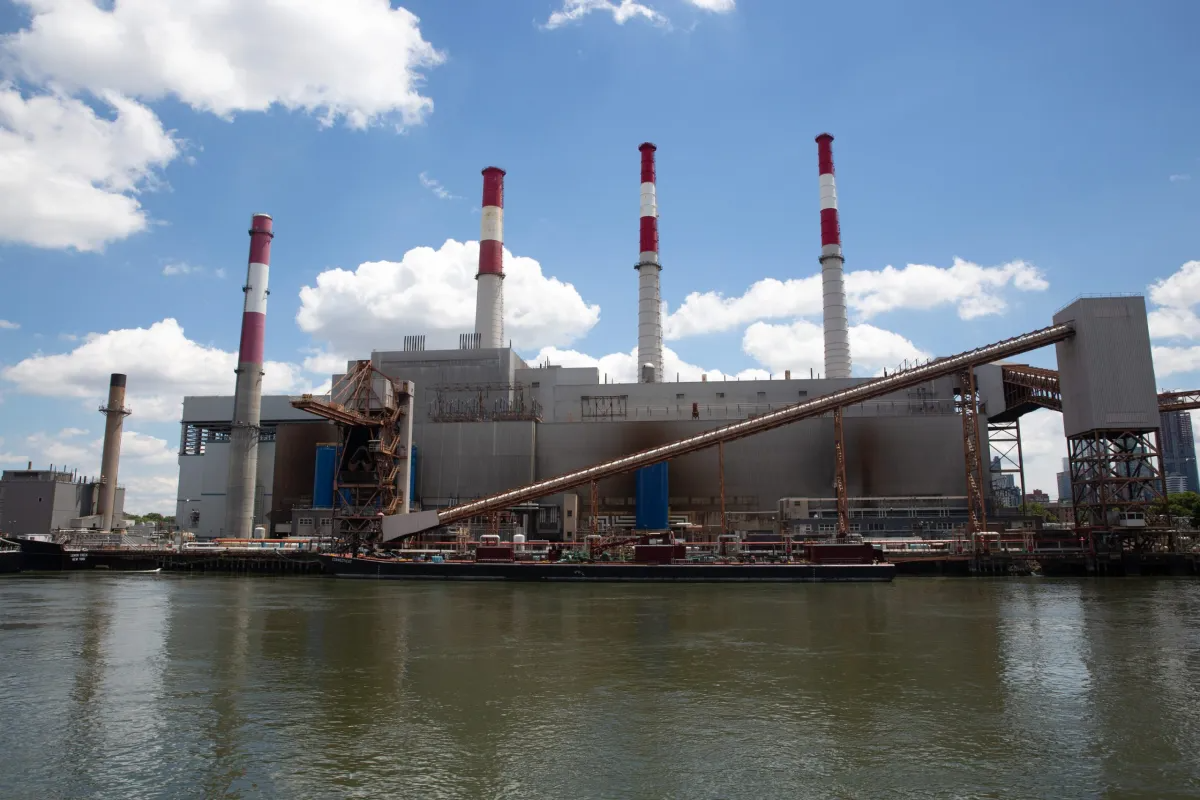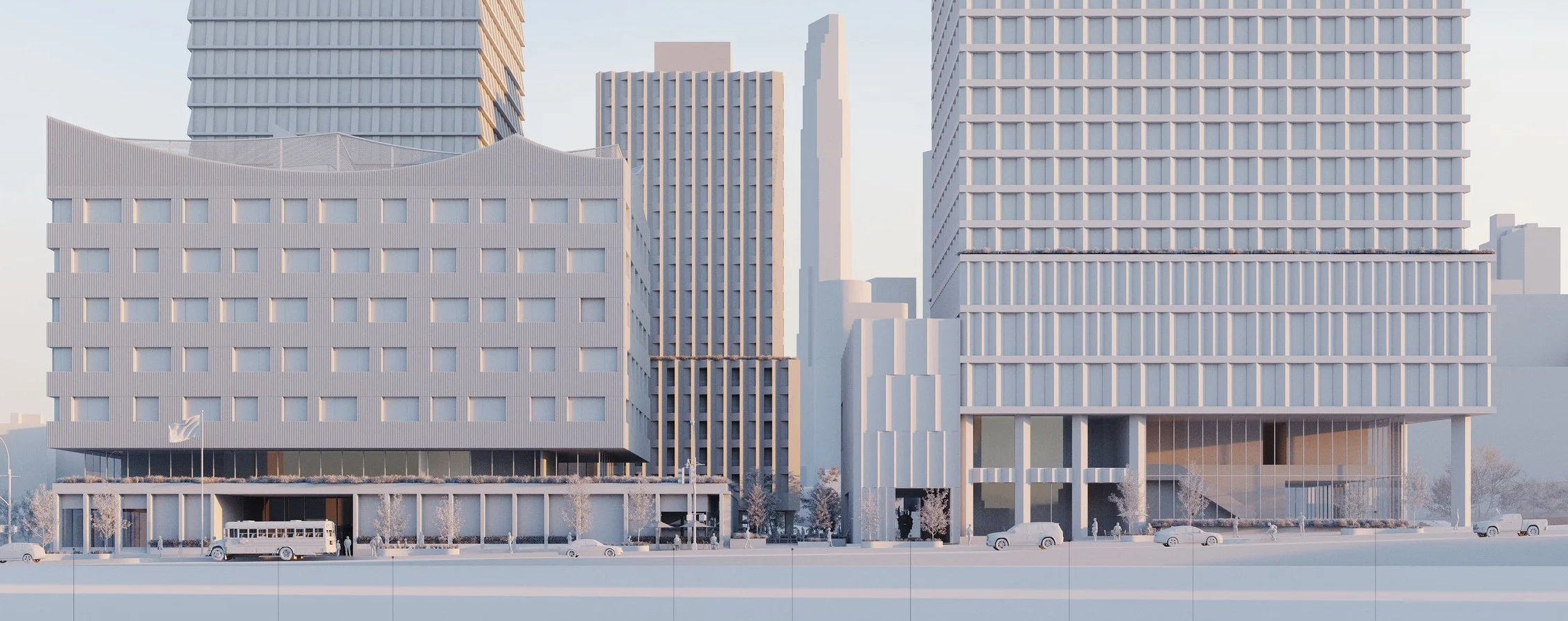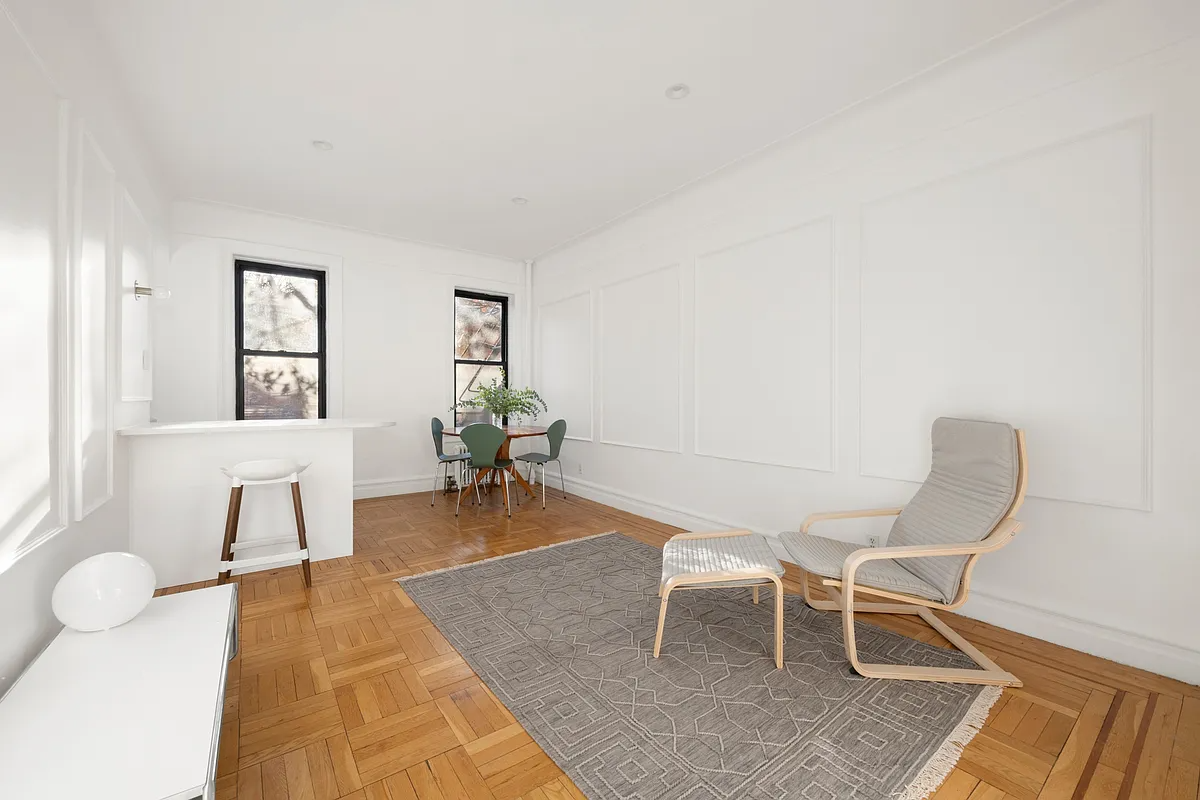DoBro Redevelopment Not So Great for Everyone
Not everybody is profiting off the Downtown Brooklyn boom, according to a recent report. Families United for Racial and Economic Equality (FUREE) and the Urban Justice Center conducted surveys of 61 small businesses in Downtown Brooklyn over the past year and found 35 have since moved or gone under. Many of the closures were attributed…


Not everybody is profiting off the Downtown Brooklyn boom, according to a recent report. Families United for Racial and Economic Equality (FUREE) and the Urban Justice Center conducted surveys of 61 small businesses in Downtown Brooklyn over the past year and found 35 have since moved or gone under. Many of the closures were attributed to four large projects &mdash City Point, Al Laboz’s planned Willoughby West tower, Stahl Real Estate’s 50-story office tower, and the planned Willoughby Square Park &mdash and the decrease in daytime business as office towers were emptied for residential development. Three-quarters of the owners surveyed are immigrants, 64 percent non-white, and 23 percent women.
The report, “Out of Business,” points out that Fulton Mall was already one of the city’s most successful retail corridors with 100,000 daily shoppers and $100 million in annual sales. In fact, a prominent local broker explained to us that Fulton Mall’s retail space is so lucrative that landlords actually removed stairwells and elevators in many of the buildings to create more ground-floor space, which now rents at between $150 and $300 per square foot (we were wondering why all the unsightly boarded-up windows). He said residential and low-end office tenants who would have rented out the upper levels were more troublesome and less lucrative, so landlords simply boarded up the windows and stopped maintaining those floors. FUREE co-director Ilana Berger suggested landlords re-open that less expensive space to small business owners, many who had already been paying prime ground-floor rates, as one way to maintain Fulton Mall’s diversity. But she acknowledged that after decades of neglect, renovation would be costly. Berger said she also tried to meet with the City Point developers to help secure space for displaced and aspiring small businesses owners in the tower’s 500,000 square feet of planned retail, but was met with disinterest. Click through for stories on some of the businesses profiled in the report, and the Downtown Brooklyn Partnership’s response…
Alas, the report alludes, the new residents and office tenants the city hopes to attract don’t generally shop at the same book and apparel stores; they don’t get their hair and nails done at the same places; and they want a different crop of restaurants. And the landlords (only five of the entrepreneurs surveyed owned their store or building) want to cash in on the lucrative 2004 Downtown Brooklyn re-zoning, but in order to build towers, the existing business owners had to be kicked out. But will they be invited back?
Joe Chan, president of the Downtown Brooklyn Partnership, a public-private agency, responded with a statement: “Downtown Brooklyn is one of the fastest growing urban centers in America. The redevelopment activity in the area brings with it jobs and a permanently enhanced local economy. The Downtown Brooklyn Partnership with its BID partners work to connect small business owners with available resources and appropriate service providers.”
According to the report, many small business owners weren’t offered this assistance. Berger said the city could create a Business Relocation Assistance Corporation for Downtown Brooklyn like they have in Williamsburg-Greenpoint and other parts of the city. Displaced small businesses are provided grants that help with relocation costs such as moving heavy equipment; hiring lawyers, architects and contractors; and other costs associated with signing a new lease. Otherwise, relocation assistance is on the onus of landlords, isn’t always honored, and often involves lawyers. Here are a few businesses profiled:
- Gallery Religious Supplies owner Maisha Morales bought the business around 2001 when it was still at Albee Square Mall, and increased its daily earnings from $100 to $2,500 by 2006, according to the report. In in effort to sign a 20-year lease under previous owner Thor Equities, she spent $15,000 on lawyers, architects and contractors, then was served a nine-day eviction notice when rights to develop the building were awarded to the new owners, MacFarlane Partners and Acadia Realty Trust. She had to spend $85,000 to move and now pays three times her former rent for space on Willoughby Street.
- A & B Books owner Eric Gift, at one time the largest distributor of African American literature in the country with three stores in the Downtown Brooklyn area, may have to close his last location on Duffield Street, in the footprint of the planned Willoughby Square Park, if the city moves forward with seizing the property via eminent domain. The Lawrence Street and Atlantic Avenue locations closed down due to lack of business because of ongoing construction and changing demographics, according to the report. They first opened in 1989.
- Lawrence Street Wigs and Hats owners Joyce and Jee Kiehm ran a thriving business since 1986 by making customized wigs. They were forced out of 141 Lawrence Street because the new owner of their building, Stahl Real Estate, wants to build a 50-story tower, according to the report.
- Bagel Guys, at 102 Willoughby across from MetroTech, ran a thriving business until the Verizon building was sold and many Chase workers were relocated to New Jersey, but stuck around hoping the new BellTel residents would boost business again, according to the report. Despite being on a month-to-month lease since 2005, owner Jeff Garguilo bought out his partners with the understanding that his business would be safe for at least the next five years, then was served with a 60-day eviction notice once his landlord decided to redevelop the property. He is unemployed and unable to find affordable space within the vicinity, but is still looking.
The questions of the day are: What responsibility does the city have to ensure that these small business owners don’t fall into financial ruin in the process? And is there going to be a higher demand for the new businesses coming in than the ones already there, considering what’s available in surrounding retail corridors?
DoBro’s Average Household Income to Double? [Brownstoner]
Massive Bridge Street Tower In The Works? [Brownstoner]
Albee Square Mall Clears Out [Brooklyn Eagle]
Much of Downtown Brooklyn Is Going Out of Business [Brooklyn Eagle]
The study area:






Re: Make My Heights the P Heights at August 1, 2008 3:27 PM
“The downtown Brooklyn plan calls for rezonings and the buildings of parks. It doesn’t say that we’ve got to kick out wig shops and replace them with H&M.”
Actually, it does say that. Part of the plan is to use eminent domain to destroy various successful businesses and homes, and replace them with buildings in tune with the Bloomberg vision. The irony of some of these is shocking- such as demolishing TrackData, a minority-owned high-tech firm with over a hundred employee. In another instance, they wanted to destroy a newly built cultural hot-spot and replace it with… another cultural hot-spot, but one probably more in line with BAM. The City also wants to destroy a book store and replace it with Willoughby Square, which will in turn be rented out to the highest bidder- the City is turning parks into private event spaces for American Express and, conceivably H&M.
So, yes, the plan pretty much says that we (the taxpayers) are paying to kick out wig shops and replace them with H&M.
If the Downtown Brooklyn plan doesn’t explicitly say that they want to destroy the existing businesses, it’s because these enterprises are invisible to the EDC.
Great discussion, so nice to see this instead of the typical trashing of Fulton Street Mall.
I don’t know much about the issue, but if you want to see a good example of how badly downtown development can go, visit downtown Jersey City sometime.
can you send a link to that? I’m really surprised at that figure, especially knowing downtown in the 80’s.
Redevelopment, or change of any kind, is usually “not so good†for someone.
Fulton used to be called the Fifth Avenue of Brooklyn … that was not a reference to Park Slope’s nor Bay Ridge’s Fifth, but Manhattan’s.
It was “anchored†by several department stores, serving down-, mid- and up-market clienteles, including:
Loeser’s, which closed in 1952 (opened in 1860; tradename purchased by neighboring Namm’s),
Namm’s (Fulton & Hoyt) closed late ’50s,
Martin’s closed 1979 after 70 years on Fulton,
Korvette’s closed early ’80s,
Mays closed 1988,
… and, the last of them all, A&S which became (a very understaffed) Macy’s in 1995.
Keep in mind each of these closings meant the loss of hundreds of jobs, not replaced by today’s ground-floor cell-phone operations.
In 1979, when the Albee Square Mall was being built on the site of a movie theater, the NYTimes report noted the nearby “seven blocks along Fulton Street where Abraham & Strauss, Mays, Korvette’s and 60 smaller stores do about $420 million of business a year.†Compare that to today’s $100 million in sales.
Maybe they are business people who can’t get the funding to renovate and upgrade? Doesn’t it seem an odd business decision to shut down part of your property rather than get tenants for the upper floors and make the most money you can?
It’s not like banks and financial institutions cared about putting money into Fulton St. For years for the same reason banks redlined neighborhoods like Bed-Stuy. Fulton St. was successful in spite of the obstacles and the neglect. It wasn’t until someone noticed just how successful it was, that bigger businesses began to take notice. Maybe if years ago, instead of doing a trashy half-assed renovation, they had put real funding into supporting the area, it would be different today, with apartments and office space instead of boarded upper floor windows.
I don’t say I agree with what they did, I’m just curious why they felt they had to make that decision to close off upper floors, and not that they are necessarily “low-class, bottom-feeding, greedy jerks. ”
If the landlords and store owners along the Fulton Mall are such low-class, bottom-feeding, greedy jerks that they knock out their stairwells for more selling space and let their upper floors rot, what on earth makes anyone think they’d be motivated to offer reasonable retail or office space to displaced “little guys”?
Giselle, don’t take that tenant’s list seriously. There are quite a few firms in Metrotech that don’t want their presence advertised. For example, may I call your attention to the map you show. Look at 2 Metrotech. There are no tenants listed. Yet the building is full. And it’s half a million sft. And I can assure you the tenant is not a government agency, but a bonafide back office tenant.
I do wonder what’s gonna happen with Bear Stearns’ space at 1 Metro.
A 24/7 community is only possible with a diverse base. Look at MetroTech. Ratner owns it all so keeps out potential competitors to the lousy food/retial that is there — so it is horrible lunch places, nothing but a candy/store/lotto outlet, card store — and closes at 5pm. I was told that it is to keep out the people from the projects (heaven forbid!). It could be a great place with resturants that stay open evenings (with people sitting on the commons) and shops where someone might actually want to spend money during the weekend. And that, my friends, would have been the fate of Atlantic yards — thanks goodness it looks like we may have been saved from that disaster.
Very true the socio-economic characteristics of neighborhoods change over time, but it normally is a cyclic change, with change normally occurring as neighborhoods become less affluent and begin to struggle. Residents move on and out.
But what’s happening downtown is not quite the same. The neighborhood became more affluent over time, Fulton St. kept improving and has been successful over the years. downtown Brooklyn caters to a huge mix of people, and that includes both residents and area workers. the uptick in the downtown area is relatively recent and quite dramatic but this isn’t a case of gentrifyers moving into a poor or blighted area (it may not be pretty but blighted it ain’t). This is a highly successful business district that is being forcibly changed to cater to a different clientele. “Poor and Black” is only one group Fulton St. services. Working and middle class is a much bigger demographic and more inclusive.
I get the feeling the many people think that the working or middle class isn’t very important. Not very exciting, not very trendy, not “sexy.” Fulton St. disproves that notion once and for all because that demographic is what generates a huge amount of money there. And they weren’t moving out so much as being forced out and into areas that aren’t considered “prime.” At least for now. the mistake is thinking this will have no effect on the quality of life for the affluent and as I’ve said, when the waiters, and office cleaners and nannies and clerks can’t afford to make the 3 hour, 4 train and bus ride to work, everyone will feel the effects. A huge part of the workforce is not well paid, no matter that they are necessary to the running of large corporations.
And as they get pushed out further and further, more will need cars because public transportation sucks. That’s only a small part of how things are so inter-related.
I am not saying that NYC will collapse because small businesses are forced out of Fulton Mall. I am saying the idea that the amount of money you have entitles you to the right to trample over others is not a policy for a viable economy or society.